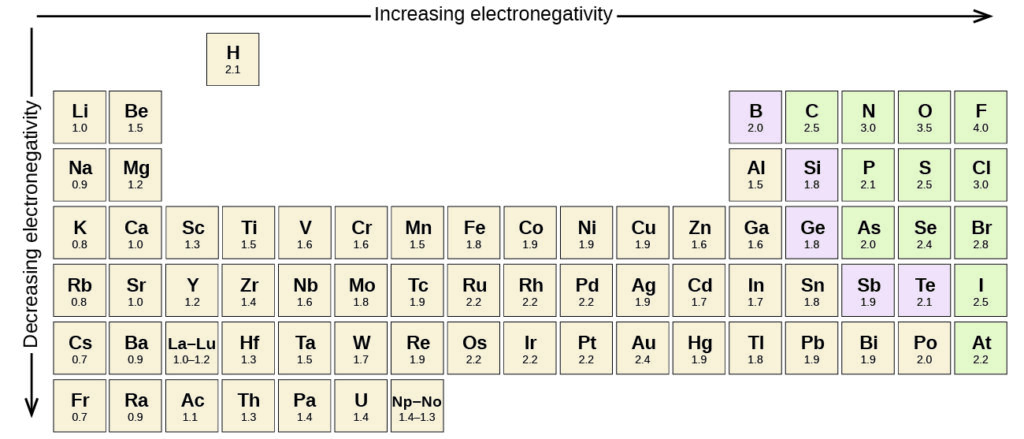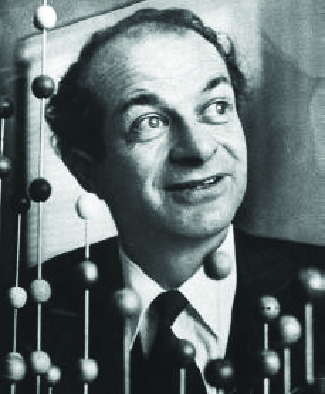Electronegativity is a measure of the tendency of an atom to attract electrons (or electron density) towards itself. It determines how the two atoms in a bond share and distribute the electrons. The more strongly an atom attracts the electrons in its bonds, the larger its electronegativity. In a polar covalent bond, the more electronegative atom attracts the electrons more strongly, resulting in a partial negative charge on that atom. The greater the difference in electronegativity, the more polarized the electron distribution becomes. Consequently, the partial charges on the atoms are larger. At a certain point, the bond becomes so polarized that the electrons are no longer shared. Instead of a covalent bond, we have an ionic bond.
The periodic table below shows the electronegativity values of the elements as proposed by one of the most famous chemists of the twentieth century: Linus Pauling. In general, electronegativity increases from left to right across a period in the periodic table and decreases down a group. Thus, the nonmetals, which lie in the upper right, tend to have the highest electronegativities, with fluorine the most electronegative element of all (EN = 4.0). Metals tend to be less electronegative elements, and the group 1 metals have the lowest electronegativities. Note that noble gases are excluded from this figure because they typically do not share electrons with others atoms, as they have a full valence shell. Although compounds like XeO2 do exist, they form only under estreme conditions. These compounds do not fit neatly into the general model of electronegativity.

Electronegativity versus Electron Affinity
We must be careful not to confuse electronegativity and electron affinity. The electron affinity of an element is a measurable physical quantity, namely, the energy released or absorbed when an isolated gas-phase atom acquires an electron, measured in kJ/mol. Electronegativity, on the other hand, describes how tightly an atom attracts electrons in a bond. We calculate it as a dimensionless quantity, rather than measuring it directly. Pauling derived the first electronegativity values by comparing the amounts of energy required to break different types of bonds. He chose an arbitrary relative scale ranging from 0 to 4. Linus Pauling
Linus Pauling, shown in the image below, is the only person to have received two unshared (individual) Nobel Prizes. He won the Nobel Prize for chemistry in 1954 for his work on the nature of chemical bonds. In 1962, he was awarded the Nobel Peace Prize for his opposition to weapons of mass destruction. He developed many of the theories and concepts that are foundational to our current understanding of chemistry. This includes key ideas such as electronegativity and resonance structures.

Pauling also contributed to many other fields besides chemistry. His research on sickle cell anemia revealed the cause of the disease—the presence of a genetically inherited abnormal protein in the blood—and paved the way for the field of molecular genetics. His work was also pivotal in curbing the testing of nuclear weapons; he proved that radioactive fallout from nuclear testing posed a public health risk.